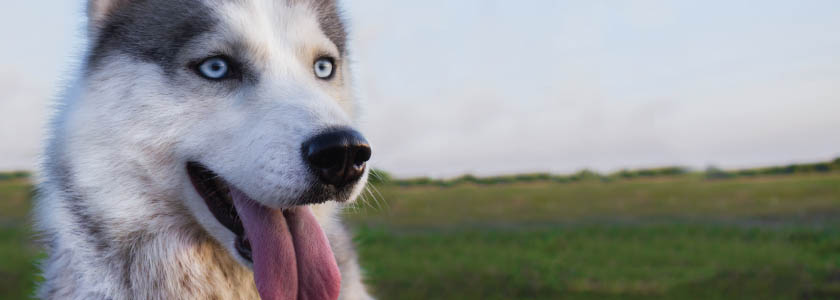Study suggests a new contender for world’s oldest dog breed

Scholars and canine aficionados alike have long debated: what is the world’s oldest dog breed?
Dogs, Canis familiaris, are direct descendants from the gray wolf, Canis lupus, and the wild diversity of different dog breeds available today “reflects intense, purposeful interbreeding of dogs in the past 150 years,” explains PBS.
Domestication by early humans started the process that got us to the dogs of today. How and when that happened is an open question.
“It was thought until very recently that dogs were wild until about 12,000 years ago,” adds PBS. “But DNA analysis published in 1997 suggests a andate of about 130,000 years ago for the transformation of wolves to dogs. This means that wolves began to adapt to human society long before humans settled down and began practicing agriculture. This earlier timing casts doubt on the long-held myth that humans domesticated dogs to serve as guards or companions to assist them. Rather, say some experts, dogs may have exploited a niche they discovered in early human society and got humans to take them in out of the cold.”
What were the first dog breeds?
Oft-cited contenders for the title of oldest dog breeds include the basenji, which was depicted in cave paintings in Libya that date back to around 6000 BC, the Chinese saluki, which was depicted on Egyptian caves dating to 2100 BC, and the Afghan hound, which is classed as a basal breed and predates modern dog breeds.
A new genetic study, however, nominates another dog breed as the species’ oldest: Greenland sled dogs.
In the study, which was authored by a team of researchers hailing from 10 nations, scientists sequenced the genome of a dog found at an archaeological site on Zhokhov Island in Siberia, where previous research had indicated that residents were among the first humans to breed dogs selectively. That genome was then compared to genes from modern sled dogs and those from other breeds.
The main findings, explained National Geographic, were that today’s sled dogs and the Zhokhov dog descended from the same branch, and that those early dogs had specific gene adaptations for eating a very high-fat diet, running and pulling sleds in a low-oxygen environment, and the ability to highly regulate their body temperatures.
“The scientists also compared the Zhokhov dog’s DNA with an even more ancient canid—a Siberian Pleistocene wolf that lived about 33,000 years ago,” said National Geographic. “Together with genomes from modern wolves and domesticated dogs, the team revealed that, remarkably, sled dogs haven’t interbred with gray wolves in the past 9,500 years, unlike other breeds. This is especially strange, given that indigenous peoples have documented dog-wolf pairings. The fact that traces of wolf genetics don’t show up in the Greenland sled dogs’ genome suggests that either hybrids didn’t survive well, or that there was some reason humans did not breed them.”
Dog years in human years? Don't simply multiply by 7
Speaking of old dogs, you know how “human years” is your dog’s age times 7? Scrap that. You need to figure in how their DNA has changed over time.
That finding comes from a recent study in Cell Systems, where researchers performed oligo-capture sequencing of methylomes from 104 labs, which were newborns to 16 years old. Those data were then compared to human methylomes to create an aging formula. And the formula is … well, it’s complicated, but here it is:
human age = 16 ln(dog age) + 31
Researchers found that the labs in question aged rapidly when they were young, and slowly when they were old. A 10-year old dog is still, in human years, around 70, but at 1, the dog was more like a 30-year old, and 4 was like 51. But a 6-year old dog was the human equivalent of 59.
“The formula contains the natural logarithmic function ln, so as dogs reach their late teens, their human equivalent doesn't change that much,” said LabRoots. “At 15, a dog is about the age of 74 in humans, but when the dogs reach 16, it's only added one 'human' year to make them about equal to age 75.”
The study’s authors said that future work could investigate if the timing of epigenetic changes early in life influences a dog breed's overall life span.
“The trajectory of changes followed by one species as it ages is not necessarily the same as that followed by another,” the authors wrote. “In particular, dog methylomes remodel very rapidly in early life compared with the methylomes of their human counterparts. Our further analysis in this regard suggests that the rate of remodeling is not only determined by the lifespan of a species but also by the timing of key physiological milestones.”


 Processing
Processing
